Spotlight on Steve Bohnstedt
Jun 21, 2017
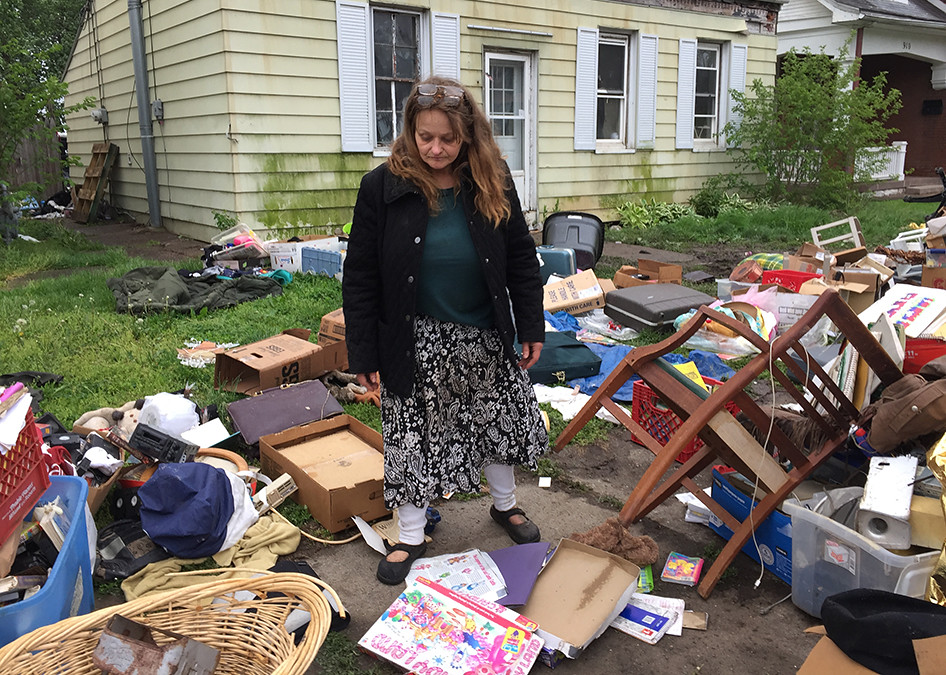
TID:
This is an intense and tragic picture, Steve. Can you tell us some of the backstory?.
STEVE:
I awoke on a Saturday morning and checked my FB feed. There, I saw a picture taken by one of our alderwomen in my ward. The photo showed stacks of household items on the curb with a partial view of some homes along the street. In the comment feed were comments by the alderwoman, clearly disparaging a woman who had just been evicted from her home of 20 years. All of the details aren't clear at this time, but Elizabeth Jones, the home owner, lost her home due to unpaid back taxes. I've been working on a year-long poverty and homelessness project here in Quincy, Illinois, so I dressed quickly and began canvassing the neighborhood to see if I could find the location where Elizabeth Jones was at.
TID:
What was the reason you decided to cover it? You mention you were in a more of an activist role - how did you engage in this role, and how did you connect with the person in the photograph?
STEVE:
I am working on a year-long documentary about homelessness and poverty in Quincy, Illinois, the town I've lived in for about 13 years. I actually left my job as the DOP to pursue this project. This situation of a person losing everything in a home eviction is common. I't one of the stepping stones to homelessness. After working primarily for newspapers across the country for more than 25 years, I decided I wasn't really happy working for the man any longer. Many newspapers across the county are having major issues struggling to define how well they are going to cover stories with photographs.
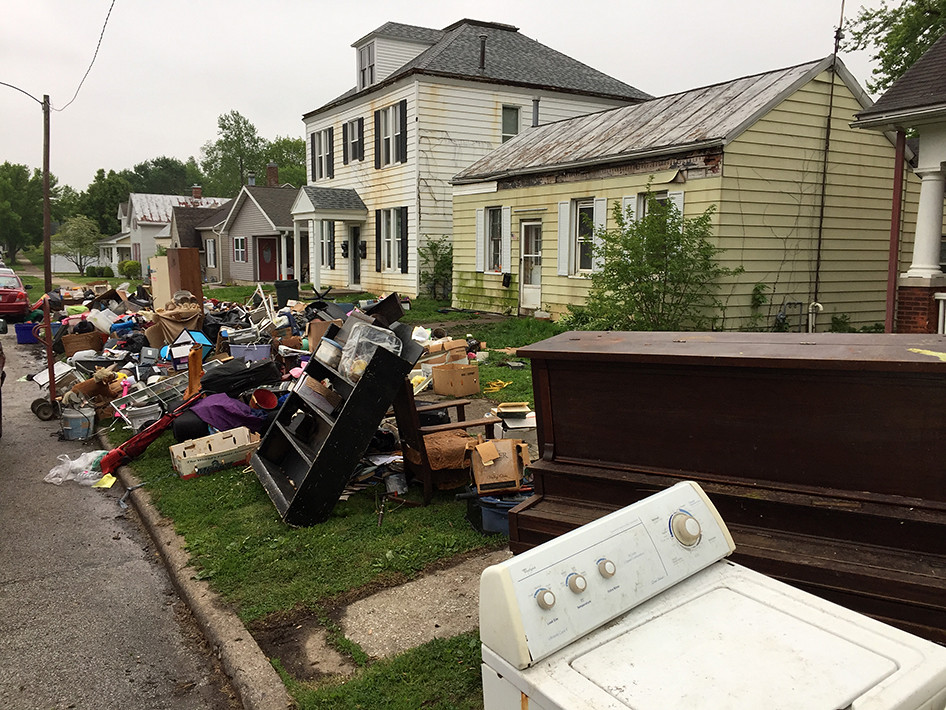
I felt I wasn't doing the work I should be doing, so I left after staying on another six weeks for my employer to find a replacement. I still adhere to strict a code photojournalism ethics in the way I make pictures, (see the NPPA code of ethics for a great example), but as an activist, I have no problem being vocal about promoting understanding when it comes to the work I am doing. I actively talk about homelessness and poverty.
In one instance, I was asked to speak to a church group about homelessness and poverty, so I asked one of the homeless guys I've been following for a few months if he'd like to join me speak to the group. I felt a homeless guy could speak more directly about homelessness than I could, so I had no problem helping to facilitate the opportunity. How did I connect with the person in the photograph? I always start with a simple introduction, " Hi, my name is Steve." In this case, I knew what was taking place. Once I learned Elizabeth's name, I quickly explained why I sought her out, to make pictures of her coping with this huge calamity. In non-spot news situations, I'm always direct and up front about asking to make pictures.
Taking that minute or two to explain why you are interested in making pictures goes a long way. You have to be interested in what a person is saying, especially in a situation like this when there's a stressful tragedy unfolding. In the case of Elizabeth Jones, I switched to an activist role by quickly making a few iPhone pictures and sending out a plea for volunteers with trucks to help Elizabeth load up her belongings. It began raining a rain that lasted about 6 hours, so when volunteers began arriving on the scene, I put my camera away to help direct the efforts, while lifting boxes and other items and helping to load trucks.
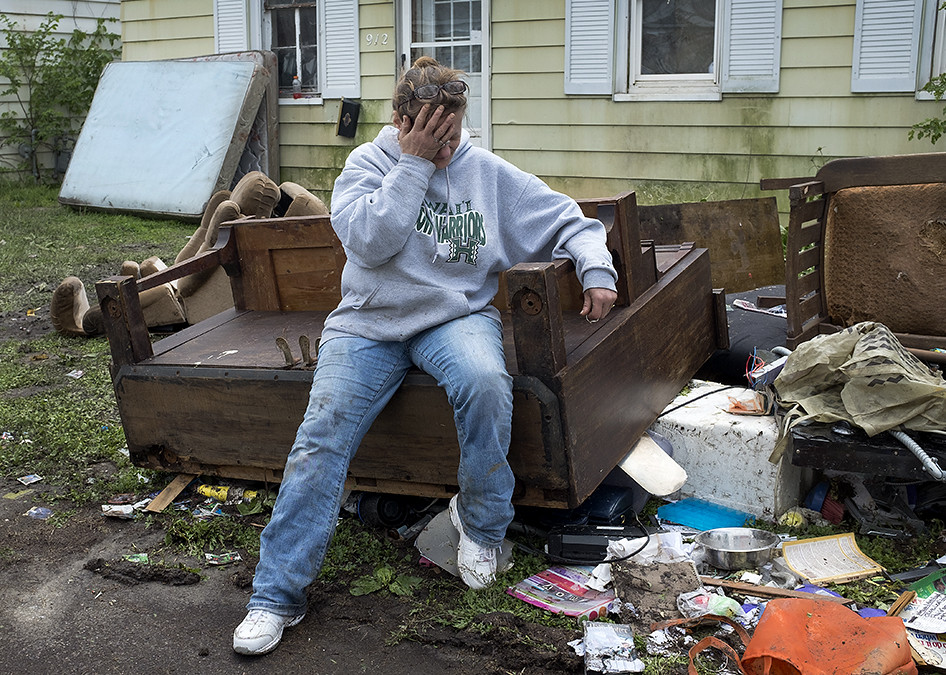
TID:
What was it like when you first arrived there, and how did you decide to document it?
STEVE:
Elizabeth's household items and personal belongings where strewn everywhere. She had been working all through the night, literally in the dark, trying to gather her most valuable personal items. Movers had place everything on the curb in a manner in which she had no idea where her most valuable things were.
I decided to document the situation the moment I heard what had happened. Essentially, law enforcement personnel showed up with the order to vacate, and men hired by the new property owner removed everything from her home knowing it was going to rain for three days straight. There are several angles to this story, still emerging.
TID:
This is such a sensitive moment. Can you talk about moving with respect and how you handled the situation?
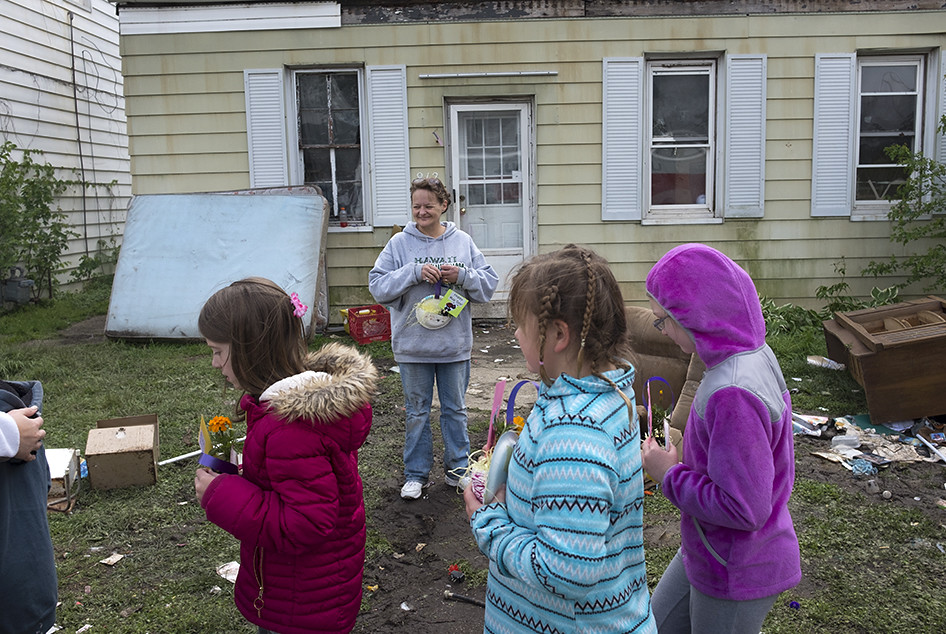
STEVE:
Sure. Once I know the person I'm photography is totally okay with my being there, I get down to business, literally focusing on moments, composition, foreground and background information. I still think of those elements when I'm working a situation. Yes, I move deliberately without making quick movements because I'm trying to vanish from the mind of the person I may be standing right in front of, as I'm making pictures.
TID:
I’m sure it’s a tough moment and there were problems that arose. How did you problem solve some of the more difficult aspects of this?
STEVE:
At one point a city alderman, police officer, and a Sheriff's deputy arrived on the scene because of the mess of household items scattered all over the sidewalk (city right of way). I decide I would make a video with my iPhone simply because I wanted an audio record of what he hell was going on.
The police officer said he didn't want me making the video, citing a private conversation. I respectfully and quickly made the point, there's simply no way he should have the expectation city government employees and representative of the city can have a "private" conversation in public. That diffused the situation right away.
TID:
Where there aspects of covering this that surprised you?
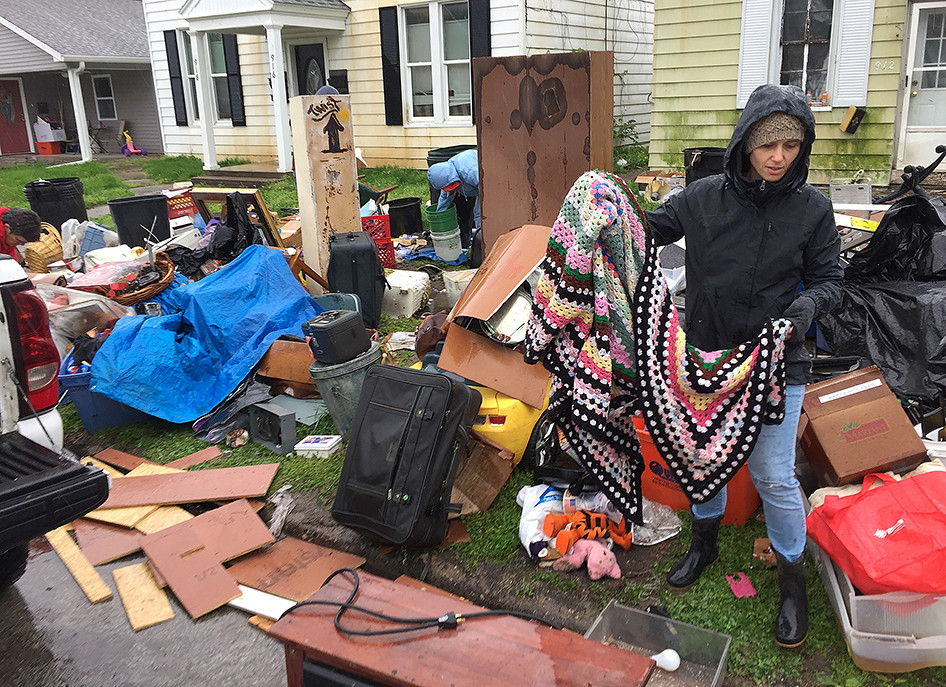
STEVE:
It was very different than the way I usually cover stories. In this case, I found my role as a social activist was broadened. Without having to deal with the daily grind of working for newspapers - deadlines and all that crap, I was able to have the time to make a few photographs and then spend the next 6 hours in the rain, and cold, working alongside the volunteers who answered the plea for help.
We also worked 12 hours the following day, mostly in the cold rain. Working alongside the person you are also photographing to share their story is a humbling experience. I truly felt some of what she was going through. Those experiences inform you about what it's like to be poor and powerless.
TID:
How did covering this event impact you?
STEVE:
I was surprised at the number of people on social media who on the onset, before I began asking for help, where making fun of Elizabeth in her time of great need, especially the alderwoman. The other thing is the number of people who showed up on perhaps the two most miserable weather days ever, to help a person they don't even know, because they felt it was the right thing to do. I think that's amazing. Seriously, I'm tearing up as I think about it.
TID:
That sounds intense and I understand the emotion behind it - I've been in a lot of situations like that as well, and it's never easy. With regards to the lead image, can you talk about the main image, and the moments leading up to it?
STEVE:
When I arrived, It became clear Elizabeth needed a lot of helping hands real fast, so I started making images with my iPhone and marrying them with a plea for help over FaceBook. I made very few images due to the rain too. This is a situation where I needed to coordinate a volunteer effort, rather than make images.
I was working the situation as a social activist more than a photojournalist at the moment. Most of the "working" the situation was rolling up my sleeves and helping load things onto trucks etc. It was a crazy day. Tons of rain pouring down the whole time for about 6 hours straight.
I'm trying to explain the images were made sporadically, so it's nothing like a series of images one might find in a contact sheet. Making sense? The image of Elizabeth sitting on her piano was made 2 days later while she was back at the property gathering a few more items. I also had to stop making stills and make video instead as some town officials arrived with the police. I needed to document what was being said.
TID:
In conclusion, what advice do you have for photographers?
STEVE:
First. The job prospects for photojournalist are tough these days. Even being an independent photojournalist is more difficult. I'm finding I must live on a shoe-string budget, while selling paintings I do to earn money to live on. I also do some commercial photography work, etc. to help pay the bills. I've stayed clear of debt for many years now, so I can afford to do this work. Being new at this independent photojournalist thing, I may have more questions than answers.
Aside from all of that, If you want to make meaningful images, be willing to be interested in the people you are photographing. Be committed to what you are doing and especially to the people you are making pictures of. Make pictures all the time, even outside of the project you may be working on. I'm currently working on poverty and homelessness stories, but am also making pictures of a entire "rough part of town." Mannequins are a favorite subject of mine to photograph in a more fine-art sort of way. Look for real moments, the expression of a feeling - love, anger, anxiety, laughter, fear, surprise, exhaustion - body language too. And seek out the photographer's whose work you connect with. Ask them questions.

:::BIO:::
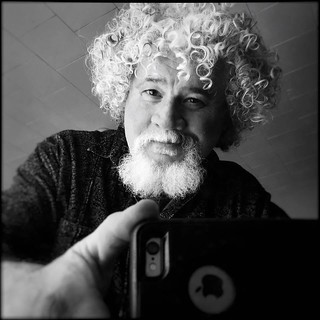
As a photojournalist, I strive to use photography in the literal Greek sense – “to write with light” – to communicate ideas, capture the essence of events, and make images that reveal the unexpected, instill compassion, and celebrate life. The enjoyment I find in exploring the rich diversity of people, and sharing that experience in a visually compelling way, is the essence of my work as a photographer. Graduating from Texas A&M in 1990 with a B.S. in photography and a minor in art, I began working as a staff photographer for the Branson Daily News, in Branson, Mo. Since then I have held staff photographer positions at three other newspapers across the country, while freelancing for several other publications and advertising agencies.
Clients include: The Washington Post, The Baltimore Sun, The Borenstein Marketing Group Inc., The National Neighborhood Coalition, Color Techs Inc., Innovative Business Technology, InfinityQS International, Associated Press, Dublin News Group, The Copeland Group, Lighthouse Design, Gallery of Fame, Wayne Newton Publications, Imax Theatres, Mel Tillis Theatre, Americana Theatre, Brenda Lee Productions, Inc., Jim Stafford Theatre, Silver Dollar City, Roy Clark Theatre, Destination Branson, Mutton Hollow Entertainment Park, The Branson Arts Council, Hollister Discovery Center, 2G Design Inc., Country Inn, Gallery of Fame, and the Fanne Mae Foundation. My work has also been published in many other news outlets including, The New York Times, Boston Globe, The Indianapolis Star, Chicago Tribune, Los Angeles Times, and The Oregonian.
After working as a staff photographer and then as the DOP at the Quincy Herald-Whig for 12 years, I left to devote time to a documentary project about homelessness and poverty in Quincy, Illinois.
You can see his work here: www.stevebimages.com